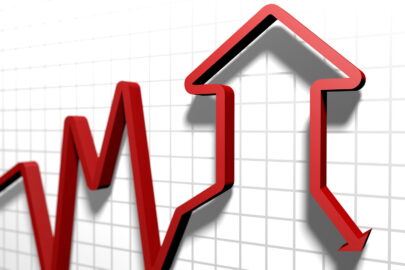Rightmove has reported a May rise of 0.4% (+£1,118) in the price of property coming to market in the last month.
However, the firm said that an 80% uplift in March transaction numbers has left behind a property drought and price surge. It reported a 6.2% (+£11,298) monthly jump in the price of typical first-time buyer properties. There is continuing strong demand in this sector despite the withdrawal of many investors following the introduction of higher stamp duty taxes, yet new-to-the-market supply is down 1.5% year-on-year.
Miles Shipside, Rightmove director, said: “If you were expecting a long period of price doldrums at the lower end of the market following the mass exit of the buy-to-let brigade, this month’s 6.2% price rise will come as a big surprise. Properties at the lower end of the market were the most common target for the investor community, and the immediate aftermath of the tax deadline saw new seller asking prices drop in this sector for just one month.
“The 1.4% fall reported in April’s index appears to have been a very short-lived knee-jerk, with an average price surge of £11,298 this month for properties coming to market with two bedrooms or fewer. It remains to be seen if these prices can be achieved and there may be some over pricing in the market; it is also a reflection of better quality property coming to market in this sector which is now targeting owner-occupiers rather than landlords.”
In the period between the November announcement of a stamp duty rise and its implementation at the end of March, the price of property coming to market in this first-time buyer/investor sector increased by 3.0%. In just four weeks it has now risen by 6.2%, the highest monthly rise recorded for this sector since February 2012. Demand for typical entry-level property remains high, with searches on Rightmove specifying two bedrooms or fewer being up by 47% this April compared to April 2015 in spite of waning investor interest.
In contrast, fresh supply for this sector is down by 1.5% in the last four weeks compared to the same period a year ago. While the price of a first home is accelerating, motivation to get on to the housing ladder is buoyed by the increasing cost of renting, better availability of mortgage products, and deposits gifted by family.
Shipside said: “Buy-to-let investors have had a bricks and mortar feast between the Chancellor’s announcement in November and the tax deadline at the end of March, and the result is a famine of suitable property and higher prices. First-time buyers are still eager to secure some of the very limited suitable supply in many parts of the country. Estate agents have perhaps been focused on getting investor sales through to completion before the tax hike, and some may have been surprised by the continuing momentum and scarcity of stock to meet ongoing demand.
“The net effect is eye-watering increases in asking prices in some towns, and is further stretching first-time buyers’ affordability even though they are competing against fewer buy-to-let investors in the market.”
The biggest increase in the price of property coming to market compared to a year ago in the typical first-time buyer sector is in Croydon in Greater London, up by 18.6%. In regions outside London, but still very much in commuter-belt territory, Dartford in the South East has recorded an 18.5% jump, with Luton in the East of England up by 18.4%. Agents report that all of these areas were the focus of considerable buy-to-let investor activity. Conversely, six out of 10 regions contain some towns which have seen falls in average asking prices, with the largest drops in Llandudno at 7.5% and Darlington down 3.0%.
Shipside added: “The country’s top price-rise hotspot is Croydon, where Londoners priced out of some other parts of the capital have sensed a combination of convenience and value, aided by some serious regeneration. Dartford has also been a very popular and affordable area for London buyers prepared to commute from the South East region and also good for rental yields for investors. With 5% less property coming to market in Dartford in the last four weeks compared to the same period in 2015, limited fresh supply is also a big factor. Luton has been a low-priced town for some time with easy London access, and has now come into play in the past 12 months.
“Not all towns are seeing these annual hikes; for example a typical first-time buyer home in Llandudno is down 7.5%, and Darlington is now 3% cheaper. The health of local economies have a big influence on demand and affordability, and consequently the amount you can ask for a property.”
Adrian Whittaker, sales director at New Street Mortgages, said: “These figures from Rightmove show a continued increase in house prices, but it’s important to remember that much of this has been strongly driven by increases in the price of high value properties, and properties in London. Average value properties in the rest of the UK have not seen such strong growth.
“The UK property market is comprised of many smaller markets that behave in different ways, and for different reasons. Smart lenders that can react to these differences have a real opportunity to provide added value to borrowers by reflecting these changes.”
